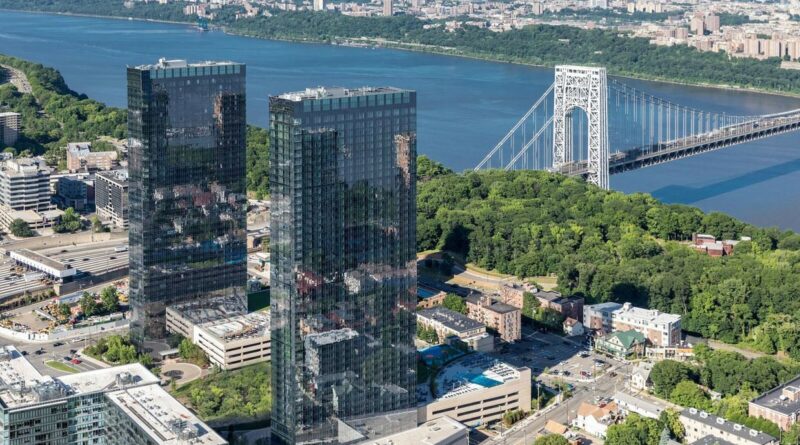History of Fort Lee New Jersey
Fort Lee, New Jersey, holds a significant place in American history, from its early days during the American Revolution to its role as the cradle of the American film industry. This article explores the key historical milestones and cultural developments that have shaped Fort Lee into the vibrant community it is today.
Early Beginnings: Pre-Colonial and Colonial Era
Before European settlers arrived, the area now known as Fort Lee was inhabited by the Lenape people. The Lenape were an Algonquian-speaking tribe who lived in small, scattered communities across the region. They engaged in hunting, fishing, and farming, making the most of the area’s natural resources.
The arrival of Dutch and English settlers in the 17th century marked the beginning of significant changes in the area. By the mid-1600s, European settlers had established small farms and trading posts along the Hudson River. The strategic location of Fort Lee on the Palisades provided a natural fortress, making it an important military site during the colonial period.
The American Revolution: Fort Lee’s Strategic Importance
Fort Lee’s name originates from its role during the American Revolution. In 1776, General George Washington and the Continental Army fortified the area as a defensive position to protect the Hudson River from British forces. The fort, named after General Charles Lee, played a crucial role in the early stages of the war.
In November 1776, after the fall of Fort Washington across the river, Washington and his troops were forced to retreat from Fort Lee, marking a significant turning point in the war. This event, known as the “Retreat to Victory,” allowed the Continental Army to regroup and ultimately achieve independence. The retreat route taken by Washington’s forces is commemorated today as part of the Washington-Rochambeau Revolutionary Route.
Post-Revolutionary Development: A Growing Community
After the American Revolution, Fort Lee transitioned from a military stronghold to a growing community. The 19th century saw the area develop into a suburban retreat for New York City residents. Its scenic location atop the Palisades, with views of the Hudson River and Manhattan, attracted wealthy families who built summer homes and estates in the area.
During this period, Fort Lee also became known for its role in transportation. The construction of the New Jersey and Fort Lee Railroad in the mid-1800s connected the town to Jersey City and, by extension, to New York City. This accessibility contributed to the town’s growth and development, laying the groundwork for its future significance.
The Birthplace of the American Film Industry
In the early 20th century, Fort Lee gained international fame as the birthplace of the American film industry. Before Hollywood became the center of filmmaking, Fort Lee was home to many of the earliest movie studios. The town’s proximity to New York City, combined with its scenic landscapes and available real estate, made it an ideal location for filmmakers.
Major film companies, including Universal Pictures, Fox Film Corporation, and the pioneering Biograph Company, established studios in Fort Lee. Silent films were produced here, and some of the most famous early movie stars, such as Mary Pickford and Pearl White, worked in Fort Lee. The industry thrived in the town until the 1920s, when the film industry moved to California, drawn by the year-round good weather and other favorable conditions.
Today, Fort Lee’s contribution to the film industry is commemorated through various markers, and the town is recognized as a pivotal location in the history of American cinema.
The George Washington Bridge: A Modern Marvel
The construction of the George Washington Bridge in the 1930s marked a significant chapter in Fort Lee’s history. Opened in 1931, the bridge connected Fort Lee to Manhattan, transforming the town into a crucial gateway between New Jersey and New York City.
Designed by Othmar Ammann, the bridge was an engineering marvel of its time and remains one of the busiest bridges in the world today. The construction of the bridge led to increased development in Fort Lee, as it became more accessible to commuters and businesses. The bridge also played a role in shaping the town’s identity, as it brought greater economic opportunities and growth.
Fort Lee in the Mid-20th Century: Suburbanization and Growth
The mid-20th century saw Fort Lee evolve from a small suburban community into a bustling town. The post-World War II era brought a wave of suburbanization, with many families moving to Fort Lee from New York City and other urban areas. The town’s proximity to Manhattan, combined with its suburban charm, made it an attractive destination for new residents.
This period also saw the construction of high-rise apartment buildings, transforming Fort Lee’s skyline. The town’s population grew rapidly, leading to the development of new schools, parks, and other infrastructure. The demographic changes during this time laid the foundation for the diverse and vibrant community that Fort Lee is today.
Fort Lee’s Cultural and Demographic Evolution
Fort Lee’s history is marked by its cultural and demographic evolution. Over the years, the town has become home to a diverse population, with significant communities of Korean, Japanese, Italian, and Jewish residents. This cultural diversity has enriched Fort Lee, making it a vibrant and cosmopolitan town.
The influx of Korean immigrants in the late 20th century has particularly shaped Fort Lee’s cultural landscape. Today, Fort Lee is known for its thriving Korean-American community, with numerous Korean restaurants, businesses, and cultural institutions contributing to the town’s unique character.
Fort Lee’s Role in the 21st Century: A Thriving Urban Hub
In the 21st century, Fort Lee has continued to grow and evolve. The town has seen significant development, with new residential and commercial projects reshaping its landscape. The construction of luxury apartment buildings, shopping centers, and cultural venues has transformed Fort Lee into a modern urban hub.
Despite its growth, Fort Lee has retained its unique character, balancing its historical heritage with modern amenities. The town remains a desirable place to live, work, and visit, offering residents and visitors a mix of cultural, recreational, and economic opportunities.
Preservation of Fort Lee’s Historical Heritage
As Fort Lee continues to develop, efforts have been made to preserve its rich historical heritage. Several historical sites and landmarks in the town commemorate its past, including the Fort Lee Historic Park, which offers visitors a glimpse into the town’s Revolutionary War history.
The Fort Lee Film Commission, established to preserve the town’s film history, has played a key role in promoting awareness of Fort Lee’s contributions to the movie industry. The commission organizes events, exhibitions, and film screenings, ensuring that the town’s cinematic legacy is remembered and celebrated.
Conclusion
Fort Lee, New Jersey, is a town with a rich and varied history. From its strategic importance during the American Revolution to its role as the birthplace of the American film industry, Fort Lee has played a significant part in shaping American history and culture. Today, it stands as a vibrant community, proud of its heritage and looking toward the future with optimism.
The town’s journey from a colonial military fort to a modern urban hub is a testament to its resilience and adaptability. As Fort Lee continues to evolve, its historical legacy remains a cornerstone of its identity, offering a link between the past and the future for its residents and visitors alike.
Discover more from City Towner
Subscribe to get the latest posts sent to your email.




